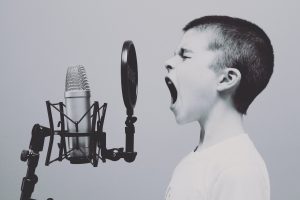Is urgent advocacy action needed for arts education at the local level?
Come about! is a command used in sailing when you want to tack (change direction) when the wind is in front of you. You are responding to external forces of wind and tide in order to reach your destination. When you come about, you change the hands that hold the tiller (steering thing) and sheet (line that controls the sail), move your body to the other side, and duck your head so the boom (horizontal beam) doesn’t hit you.
The “duck your head” bit is especially important if you’re a passenger (aka crew). Remember what happened to Goldie Hawn in Overboard because she didn’t duck?
I am a white-knuckled sailor at best but am quite experienced in ducking and changing tack to adjust to incoming headwinds in the arts education seascape. Now may be a time that requires a local advocacy response to a dramatic wind shift in the form of reduced public funding for education. The key to staying on course is to be prepared, stay convicted, and act strategically. And, above all, don’t go it alone.
You’ll find many posts on ElevateArtsEd that encourage advocacy— all the things you can/should do proactively to create value and establish a presence in your community. Things like strategic planning, coalition building, relationship building, funding strategies, use of data, fostering creativity, sustainability, communications, and more. All proactive and strategic in nature.
Those preparations will give you a leg up in times that require reaction and response. If you are facing potential threats to your music and arts education programs now, I suggest you begin your advocacy planning with these questions:
What is at stake?
Is your school district considering specific cuts to arts teaching positions? What do you know and how do you know it? Get the facts right. We’re not talking here about the threat of a changed delivery model (which is real but not fatal), but rather a real reduction in the teaching workforce or course offerings that is disproportionate with other subject areas. A reduction that will result in loss of access to arts education for students. If your teachers or courses are not threatened, fantastic news! Keep up the good work of proactive advocacy on an ongoing basis.
Important note: Local district policies are governed by state and federal policies. Most states have strong policies governing the provision of arts education. Go HERE to check your state policies. How the policies are implemented at the local level is often the issue when budget shortages come into play. Remind local leaders of the intent behind the policies.

Photo by Jason Rosewell
What is your message?
Articulate your message in positive terms—inside a frame that speaks to community values. For example: Music and arts education is essential to the social and emotional well-being for ALL students in XXXX district. The framing here points to social and emotional well-being and equity —important values to community leaders. Be positive and inclusive. In crafting an effective message, it’s not what you want to tell them, it’s what they are willing to hear. Test your message with your target audience.
What is your ask?
When you craft a specific ask, use positive language. Make it about the students!
We ask that all students have continued access to an equitable delivery of arts education that includes dance, media arts, music, theatre, and visual arts that supports their educational, social, and emotional well-being, taught by certified professional arts educators in partnership with community arts providers. (modified excerpt from Arts Education Is Essential statement—see below)
-OR-
As the XXX district plans for re-opening, we ask respectfully that the arts (dance, media arts, music, theatre, and visual arts) be included in ongoing planning discussions of programs and budgeting as the arts are essential to a well-rounded education.

Artist: Jasper Johns
Who are the decisionmakers?
Are the proposed cuts a district decision recommended by the superintendent and school board? This is important to know so you can correctly identify your advocacy targets and potential messengers that can reach those targets.
Who is in your kitchen cabinet?
Who are you collaborating with? A cadre of teachers? Like-minded community and school colleagues? Identify a small group to help plan, strategize and implement. Work across disciplines and departments and reject silos.
Who are your champions?
Who can carry your message beyond your immediate circle? Identify community and business leaders, parents, nonprofit partners, and/or administrators who can amplify your message at school board meetings, with community leaders, and on traditional and social media. Student voices are important also, as long as their participation is authentic and not exploitative.

Photo by David Clode
What solutions do you bring to the table?
Come to the table with concrete solutions that address the underlying issues. With budgetary threats, it’s important to establish all the positive benefits the arts bring to the students, school and greater community. And articulate the loss as well. What will happen if students were to lose access to the arts?
Are you taking full advantage of all the advocacy resources available to you?
For starters, download a copy of Arts Education is Essential, a position statement jointly endorsed by over 50 arts and education agencies. Use the talking points.
More fantastic resources:
National Association for Music Education (prof learning, policy, advocacy, Title IV-A toolkit)
NAMM Foundation (Best Communities for Music Education, SupportMusic Coalition)
Americans for the Arts (policy and advocacy, arts education tools)
Arts Education Partnership (ArtsEdSearch, ArtScan)
State Education Agency of Directors of Arts Education (SEADAE) (Arts Education Data Project)

Photo by Phillip Swinburn
What’s in your tactical toolkit?
There are a variety of tactics to reach your target audience. That said, strategy drives tactics, not the other way around. It’s important to set out the Why before the How. Potential tactics may include presentations at school board meetings, op-ed in local paper, one-on-one meetings with decisionmakers and influentials, leveraging grants and awards, letter writing or call-in campaign, and petition.
Speaking of tactics, the California Alliance for Arts Education published a very useful toolkit for advocates with talking points, use of social media, and sample templates for letters to the school board and op-eds.
What will you do when the immediate crisis is over?
You know what they say— wash, rinse, repeat. An advocate’s work is never done. Keep sailing. And if you need a crew, sign me up!

Photo by Jonathan Smith
Cover photo by Nick Fewings





